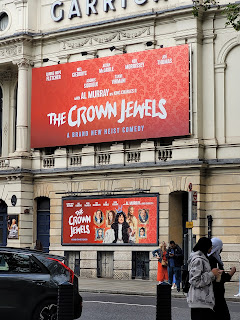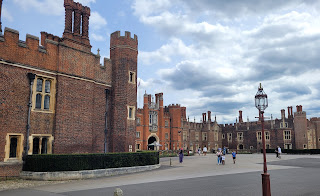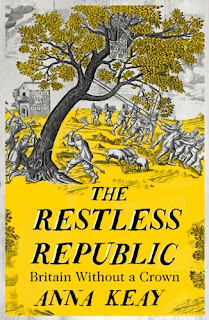Cambridge
The #ECWtravelogue took the opportunity to have a sneaky look at places of interest in Cambridge under the pretence of taking offspring #3 to look around the University. August update: proud dad moment - he got in!
 |
| Charles I Dominion of The Seas medal, Fitzwilliam Museum |
Cambridge was very firmly in the area loyal to Parliament, it was in fact the heartland, and headquarters of the Eastern Association. In 1643, Oliver Cromwell was made governor of the town. The town's existing castle was fortified and earthworks were thrown up around the town.
The King's men came within a few miles but never threatened Cambridge. Other than being a garrison, and the inevitable rambunctious behaviour of the soldiers, the Wars passed the town peacefully by.
On 3 January, 1644 the iconoclast William Dowsing and his troops destroy fourteen ‘superstitious pictures’ in the Round Church. However, the carved wooden angels on the ceiling survive the ordeal intact.
What's There Now?
The medieval castle is long gone, but the castle mound still exists, and is believed to show some of the earthworks. A longer section of earthworks is believed to still exist, and is noted by English Heritage (located to the side of the car park at the council offices, adjacent to Castle Mound).
The Fitzwilliam has amongst it's collection a strange portrait of Queen Henrietta-Maria, resplendent with real pearls and human hair. Sadly, this wasn't on view when I visited. However, in amongst the eclectic collections are a number of gems. The arms and armour gallery has a number of relevant objects.
 |
| Pikeman's armour, London 1640s |
 |
| Flemish half armour c1620 |
 |
| Half armour 1550-1620 |
 |
| Pieter Nason "Man in Armour With Yellow Flowing Hair" |
 |
| Armoured ridding gauntlet |
 |
| A selection of stirrups and spurs |
 |
| German or Polish cavalryman's hammer 1640s |
 |
| Powder flask 1640s |
Upstairs in the galleries are a number of interesting portraits.
 |
| Sir Peter Lily "Portrait of a Lady" 1665 |
 |
| Van Dyck: "Archbishop Laud" |
There are is an extensive collection of medals and coins
 |
| Cromwell |
The site of the Black Bear Inn is commemorated with a plaque
Postcodes for SatNavs
Castle Mound, Castle Street CB3 0RG
Sidney Sussex College, Sidney Street CB2 3HU
Fitzwilliam Museum, Trumpington Street CB2 1RB
Black Bear Inn, Market Passage CB2 3PF
The Round Church, Bridge Street CB2 1UB
Peterhouse College Chapel, Trumpington Street CB2 1RD
* we don't actually know if it is Cromwell's head, it might even be the head of a king...











.JPG)











Another interesting episode of the travelogue. That hammer looks gruesome.
ReplyDeleteYou'd certainly know about it, if you got a wallop from it.
DeleteExcellent as ever. And thanks for putting the Fitzwilliam Museum on the radar. I had not been aware of it previously.
ReplyDeleteWell worth a visit
DeleteFantastic pictures, thanks for this entry Radar.
ReplyDeleteGlad you like them Codsticker
Delete